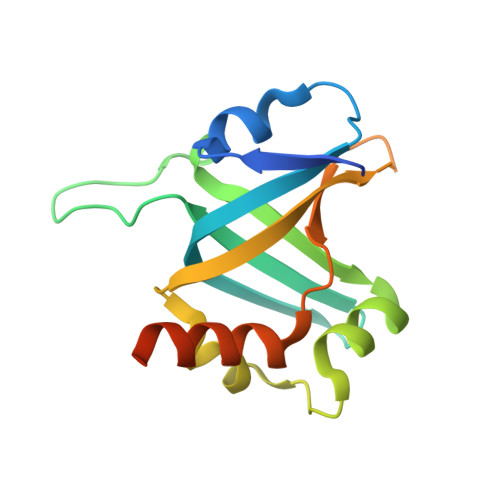Analyses of Candida Cdc13 Orthologues Revealed a Novel OB Fold Dimer Arrangement, Dimerization-Assisted DNA Binding, and Substantial Structural Differences between Cdc13 and RPA70.
Yu, E.Y., Sun, J., Lei, M., Lue, N.F.(2012) Mol Cell Biol 32: 186-198
- PubMed: 22025677
- DOI: https://doi.org/10.1128/MCB.05875-11
- Primary Citation of Related Structures:
3RMH - PubMed Abstract:
The budding yeast Cdc13-Stn1-Ten1 complex is crucial for telomere protection and has been proposed to resemble the RPA complex structurally and functionally. The Cdc13 homologues in Candida species are unusually small and lack two conserved domains previously implicated in telomere regulation, thus raising interesting questions concerning the mechanisms and evolution of these proteins. In this report, we show that the unusually small Cdc13 homologue in Candida albicans is indeed a regulator of telomere lengths and that it associates with telomere DNA in vivo. We demonstrated high-affinity telomere DNA binding by C. tropicalis Cdc13 (CtCdc13) and found that dimerization of this protein through its OB4 domain is important for high-affinity DNA binding. Interestingly, CtCdc13-DNA complex formation appears to involve primarily recognition of multiple copies of a six-nucleotide element (GGATGT) that is shared by many Candida telomere repeats. We also determined the crystal structure of the OB4 domain of C. glabrata Cdc13, which revealed a novel mechanism of OB fold dimerization. The structure also exhibits marked differences to the C-terminal OB fold of RPA70, thus arguing against a close evolutionary kinship between these two proteins. Our findings provide new insights on the mechanisms and evolution of a critical telomere end binding protein.
- Department of Microbiology & Immunology, WR Hearst Microbiology Research Center, Weill Medical College of Cornell University, New York, New York, USA.
Organizational Affiliation:
















